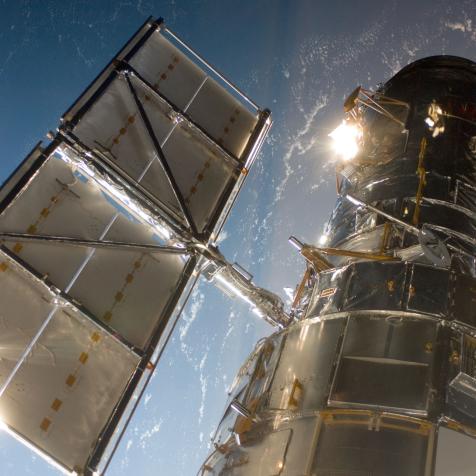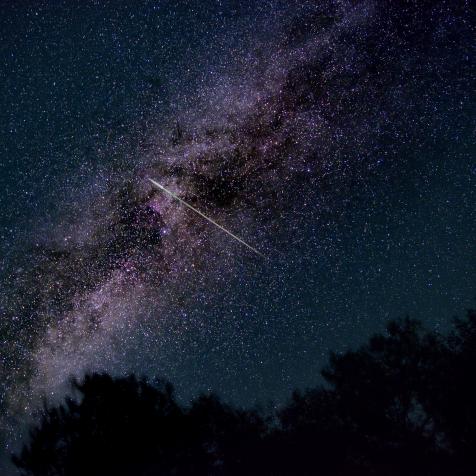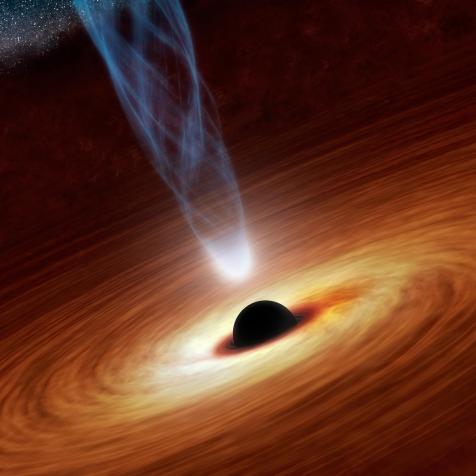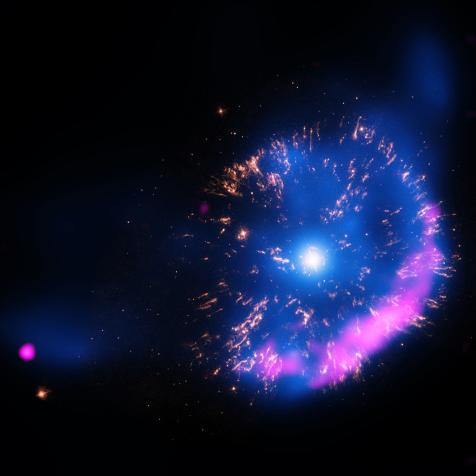
ESA/Gaia/DPAC
Scientists Watch as Stars Quake

The European Space Agency’s Gaia spacecraft has managed to watch stars tremble, their light subtly changing as starquakes ripple through their surfaces. Which is pretty cool, because Gaia wasn’t even designed to do it.
Earthquakes on our planet range from nuisance to outright natural disasters. But they also provide loads of useful information about the interior of our world. This is the science of seismology: studying how the ground under our feet is constantly shifting to learn about what the Earth is made of. By comparing how quickly earthquakes travel and where they pop up, scientists can develop models of the layers of the Earth’s interior, like the sizes of crust, mantle, and core.
Astronomers can play the same game with stars, too. Obviously, they can’t plant seismometers on the surface of a star, but since stars are giant glowing balls of plasma, they can do a different trick. As quakes race through the body of a star, they will affect the temperature and density of the plasma, which changes how brightly the star will shine. So by carefully studying a stellar surface, astronomers can use that information to look inside the star itself.
We have the most practice doing this with the Sun, because a) it’s close, so we can get really detailed images of the surface, and b) it’s easy to watch for really long periods of time. With this technique of helioseismology, astronomers have been able to develop extremely detailed pictures of what’s going on inside the Sun.
Applying the same technique to other stars is a bit more challenging because they’re much farther away, but it’s not impossible. This is the scientific field of asteroseismology, and from it, we can learn how other stars tick.
The European Space Agency’s Gaia satellite mission wasn’t intended to ever do asteroseismology, but it turns out it’s pretty good at the job. The primary goal of Gaia is to provide detailed measurements of over 2 billion stars in our local patch of the Milky Way galaxy. That’s less than 1% of all the stars in our galaxy, but it’s still pretty impressive. In a series of data releases, the Gaia mission is making all of its data public: the positions, velocities, brightnesses, and other properties of all these stars.
Part of the Gaia mission is devoted to examining variable stars, which as the name suggests are stars that change in brightness over time.
A group of clever astronomers used this dataset to perform asteroseismology on some of the stars. They had their work cut out for them since the changes in brightness from starquakes are very subtle. But they succeeded and provided a rich catalog of wiggling, vibrating stars.
Future astronomers will mine this precious resource to help refine and tune up models of stellar interiors, learning how the stars throughout our galaxy evolve and live.
Learn More About the Universe
Journey Through the Cosmos in an All-New Season of How the Universe Works
The new season premieres March 24 on Science Channel and streams on discovery+.




















